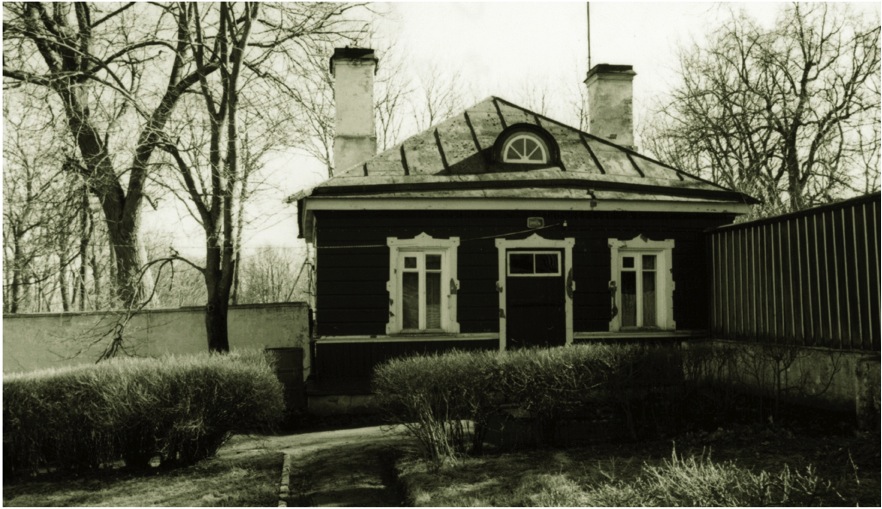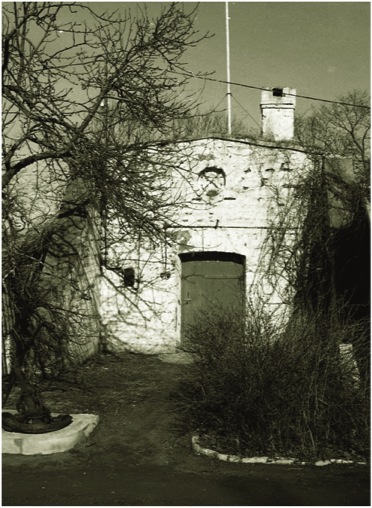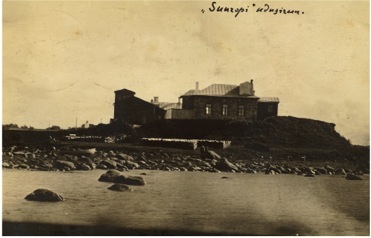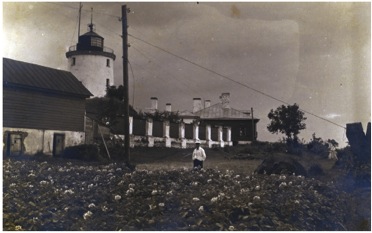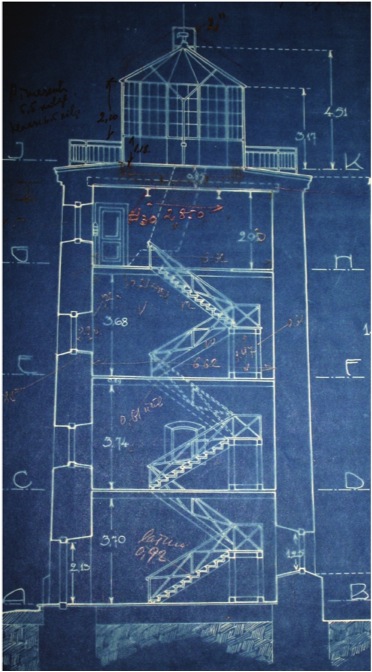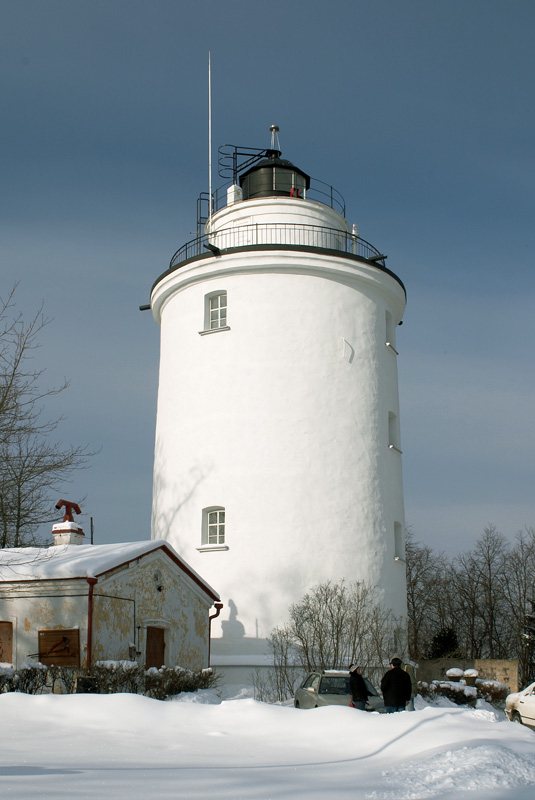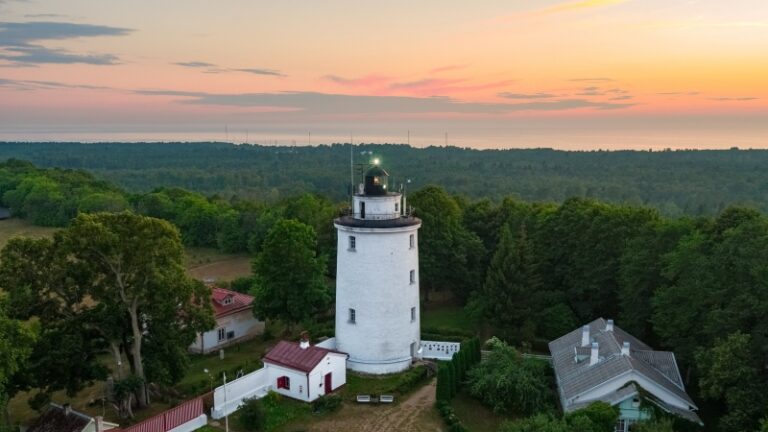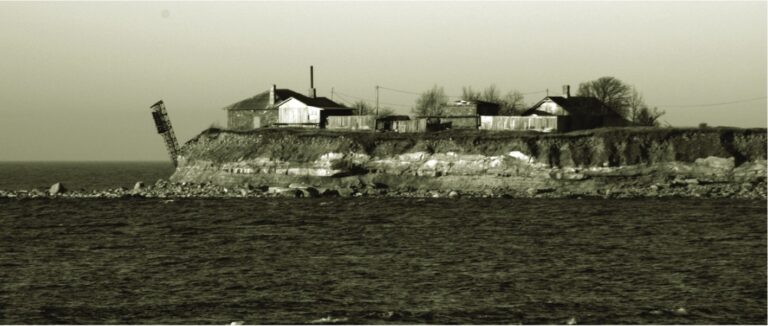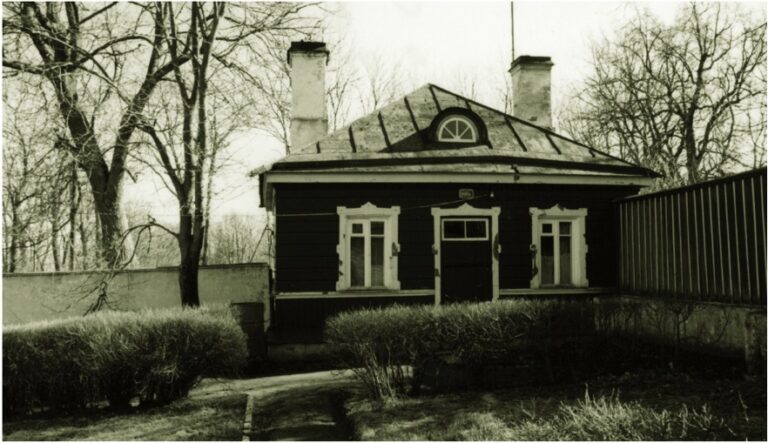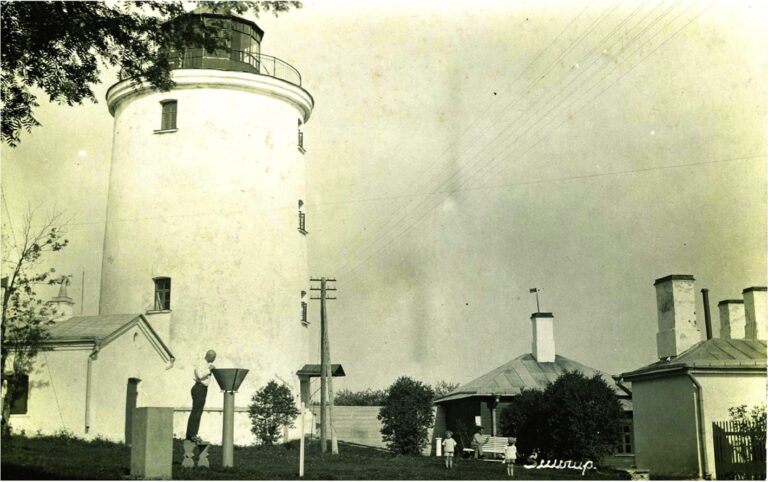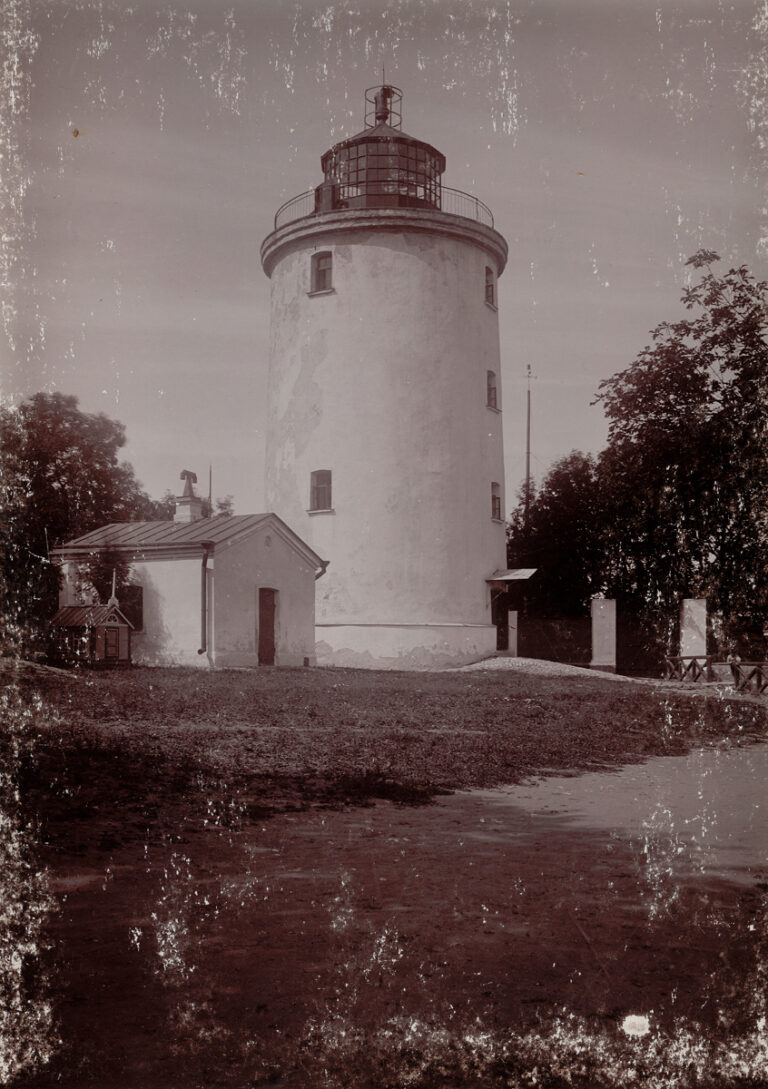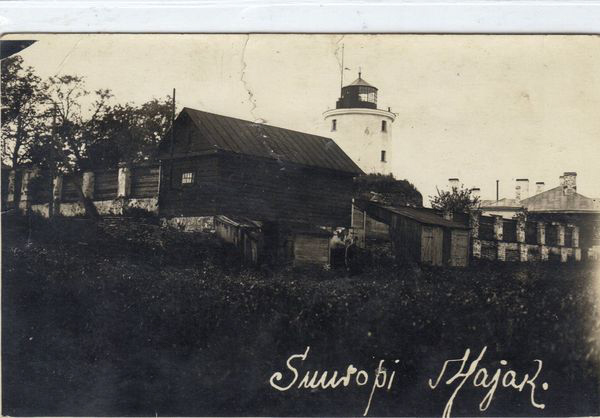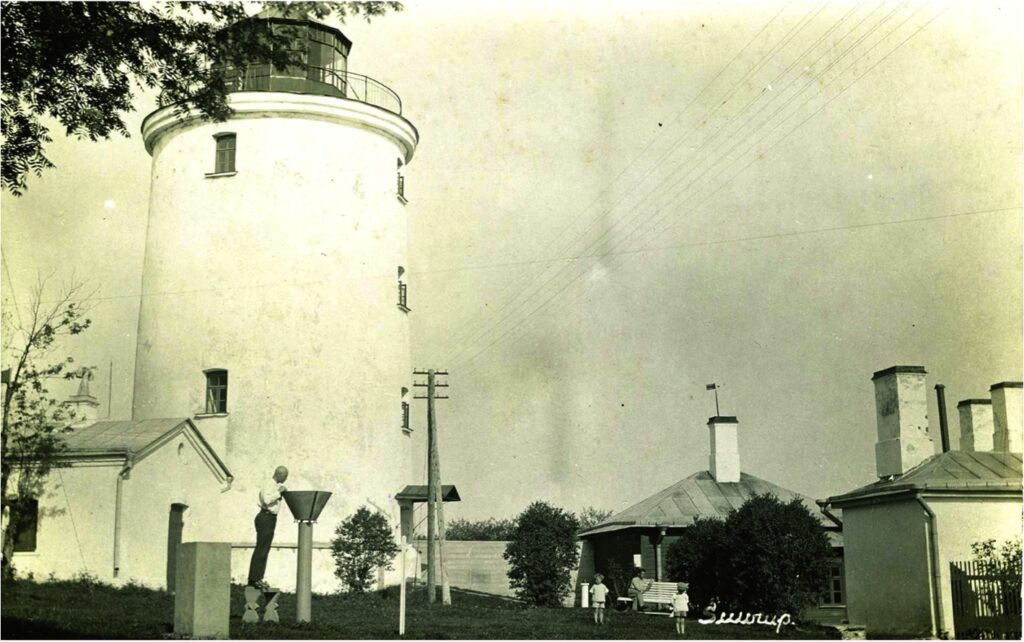
The Suurupi Upper Lighthouse is located on the peninsula of the same name, on a high limestone cliff, one kilometer from the coast. The lighthouse serves as a warning beacon on the ship route between Naissaare and the mainland, helping ships navigate around the shallow waters of Suurupi Peninsula and its surroundings. The Suurupi pair consists of the Suurupi Lower and Upper Lighthouses, situated approximately 2.245 kilometers apart. The idea of constructing a lighthouse was proposed to the Admiralty College in 1759 by Rear Admiral S. Mordvinov. The following year, a lighthouse was put into operation, likely with an open flame. In 1792, a lighthouse measuring four fathoms in height with a lantern room ten feet high on top was recorded. In 1812, the tower was reconstructed and equipped with catoptric lights. By 1817, the lighthouse had a height of 51 feet, its light was 136 feet above sea level, and it had a visibility of 18 miles. The 19th century saw multiple renovations of the tower, and in 1870, it was plastered and painted white. In 1879, records indicate the presence of a wooden residence, granary, and sauna near the lighthouse. At the beginning of the 20th century, a fuel depot, cellar, and animal husbandry buildings were added. The complex was surrounded by high stone posts.
By 1931, the lighthouse's fixed light was replaced with a flashing light.
During World War II, the lighthouse and the residence suffered significant damage but were reconstructed by 1951. The rebuilt structures were slightly different from the originals. Wooden floors were replaced with concrete slabs, and a service room was added at the top of the tower, replacing the lantern room. In 1998, a new lantern room was installed, and lighting equipment was modernized. The restoration work was completed in 2003 with the plastering of exterior walls. Suurupi Lighthouse is among the oldest in Estonia. Among the 19th-century auxiliary buildings that remain are the petroleum depot, sauna, cellar, and shed. The ensemble is protected as a national heritage site.
SUURUPI SIREN STATION.
In 1898, a siren building was constructed on Ninamaa Peninsula, 1.5 meters away from the lighthouse. Additionally, a residence for the station's operators and a petroleum depot were built. A pneumatic siren sounded for eight seconds every 75 seconds during foggy conditions. In 1906, the residence was expanded, a sauna was built, and the entire complex was enclosed with a fence.
By 1968, the siren was replaced with a nautophone, and a 13-meter mast was installed at the tip of the peninsula on a foundation made between the rocks. Today, all buildings are still standing, but their future is uncertain. Erosion from storm waves is gradually consuming the narrow peninsula's shores, and it's only a matter of time before these buildings succumb to the sea. This fact, despite their architectural and historical value, was the decisive factor in not designating them as protected cultural heritage – no law can withstand the forces of nature.
